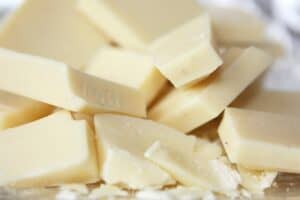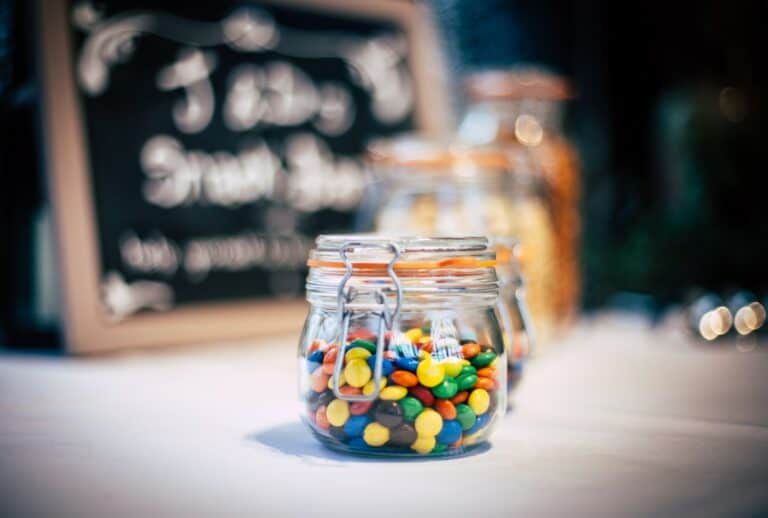If there’s one thing chocolate lovers need to know, it’s how to store chocolate. Properly storing chocolate significantly extends its shelf life, ensuring it stays fresh and melts perfectly in your mouth. Unfortunately, many people are unaware of the unique need for chocolate storage. This article will outline vital chocolate storage recommendations to help keep your chocolate – be it dark chocolate, milk chocolate, or white chocolate – in its best condition.
Understanding the Different Types of Chocolates

The first step to storing chocolate is understanding that not all chocolates are created equal. Most chocolate bars, be it white, milk, or dark, share commonalities such as sugar and cocoa butter. However, each type also boasts its unique storage needs.
Dark Chocolate is primarily cocoa solids, sugar, and cocoa butter, with only cocoa mass lending the intense flavor. As a result, dark chocolate can tolerate warm temperatures better than milk or white chocolates and maintain its long shelf life up to a year when stored properly.
Milk Chocolate contains all that dark chocolate offers but with the added ingredient – milk. The inclusion of milk reduces the chocolate’s shelf life and makes it more susceptible to flavor changes with improper storage.
Lastly, White Chocolate is composed of sugar, cocoa butter, and milk but lacks cocoa solids. It is the most delicate of the chocolates, with a shorter shelf life, and requires the most attention when storing.
Ideal Conditions for Chocolate Storage
Now that you understand the different types of chocolates, let’s venture into the best way to store them. Generally, chocolate storage recommendations hinge on three major factors: temperature, humidity, and light. All chocolates should be kept in a cool, dry place away from direct sunlight and artificial light. The perfect temperature for chocolate storage is around 18 – 20°C (~65-68 °F). Humidity levels should be kept below 50% to prevent moisture from invading the chocolate. Finally, chocolate should be stored away from heat and light, which can cause chocolates to melt and discolor.
How to Store Chocolate at Home
To store chocolate at home, it is best to use an airtight container. Professional chocolate makers affirm that storing chocolate in an airtight container prolongs shelf life and maintains its flavor. Solid chocolate, like your over-the-counter chocolate bars, should be kept in a cool, dark place within their original packaging until you’re ready to eat them. Some people might house their chocolate in the fridge, but room temperature is perfectly fine for most chocolate bars and confections.
If you must refrigerate chocolate due to warm temperatures or lack of air conditioning, here’s how to do it:
- Ensure the chocolate bars are sealed in an airtight container or ziplock bag to prevent the chocolate from absorbing the odors of other foods in the fridge.
- Keep the temperature on a steady cool, not too cold; a sudden temperature shock can alter the chocolate’s texture.
- Before eating the chocolate, let it slowly come to room temperature to avoid sugar bloom and fat bloom. These happen when sugar or cocoa butter rises to the surface after the sudden temperature change, creating white sugar crystals on the chocolate’s exterior.
You could also freeze chocolate, but this introduces moisture, a thing chocolate detests. However, if you must freeze chocolate, follow the above procedure for refrigerating chocolate, ensuring it is wrapped in an airtight container to avoid freezer burn.
Understanding the Shelf Life of Stored Chocolates

Despite what one might think, chocolates do not last forever, even those with only cocoa mass. Stored properly, most chocolates have the following shelf life:
- Dark Chocolate: Over a year
- Milk Chocolate: 6-9 months
- White Chocolate: 4-6 months
Chocolate Storage Recommendations: Common Mistakes
Storing chocolate near heat sources or in direct sunlight is a common error. Warm temperatures cause the cocoa butter in chocolate to rise, creating a fat bloom that alters the chocolate’s taste and texture.
Similarly, refrigerating or freezing chocolate without properly sealing it in an airtight container can introduce moisture, leading to a sugar bloom. Chocolate, when exposed to cooler temperatures and then returned to a warmer temperature, can experience condensation that causes sugar crystals to form on the outside.
Another mistake is storing chocolate with other foods without proper protection. Chocolate easily absorbs the smell from other foods, and hence it’s essential to keep your chocolate in a tightly-sealed container.
Extra Tips for Chocolate Storage

- Dark Chocolate is hardier and less affected by temperature fluctuations; hence, it can be stored at room temperature.
- Milk and white chocolates have a higher sugar and milk content, making them more susceptible to spoilage. Hence, they should be stored in a cooler location but remember that the fridge can be too cold.
- A dark place with minimal exposure to light will prevent discoloration in the chocolate.
- A dry place keeps moisture away and prevents sugar from rising to the surface.
Indeed, good chocolate is one that is stored in the right conditions, maintaining its original flavor, texture, and taste. When chocolates are stored properly, they can be enjoyed even months after their purchase. So, whether you’re saving some for the holidays or waiting for the perfect time to savor your favorite chocolate, these chocolate storage recommendations will come in handy.
Enjoy a world where your favorite confections don’t become victims of sugar or fat bloom. With these chocolate storage tips, every bite will be as intended by the chocolate makers: rich, bold, and undeniably delicious.
Other suggested articles:

